New to the world of SEO or want to learn more advanced search engine optimization concepts? Well then, you’ll definitely want to read this SEO guide from start to finish. Feel free to bookmark it, too!
SEO, or search engine optimization, is vital for digital marketers. Having a website, no matter how beautifully designed it is, just won’t cut it anymore. It should be fully optimized for search engines.
Why?
Let’s say you have this business website filled with must-read content and an eye-catching layout, but the problem is, based on Google Analytics, you see nobody coming to visit. This is where SEO comes in.
With a solid SEO strategy, your website will rank high in search engine results pages – so high that users looking for your products or services will discover you in a single click.
Fortunately for you, you’ve stumbled upon this SEO for beginners guide of ours. Applying our tips and being persistent with your efforts will help you rank your way to the top. We guarantee you that.
Before we can get into the SEO basics, let’s learn about SEO first.
What Is SEO?
SEO is the process of boosting your website traffic through search engine results, which then improves your site’s online visibility. Users searching for terms related to your business will have a better chance of finding your website and potentially turn into customers.
In other words, search engine optimization is how you can ensure your website shows up at the right place to the right people.
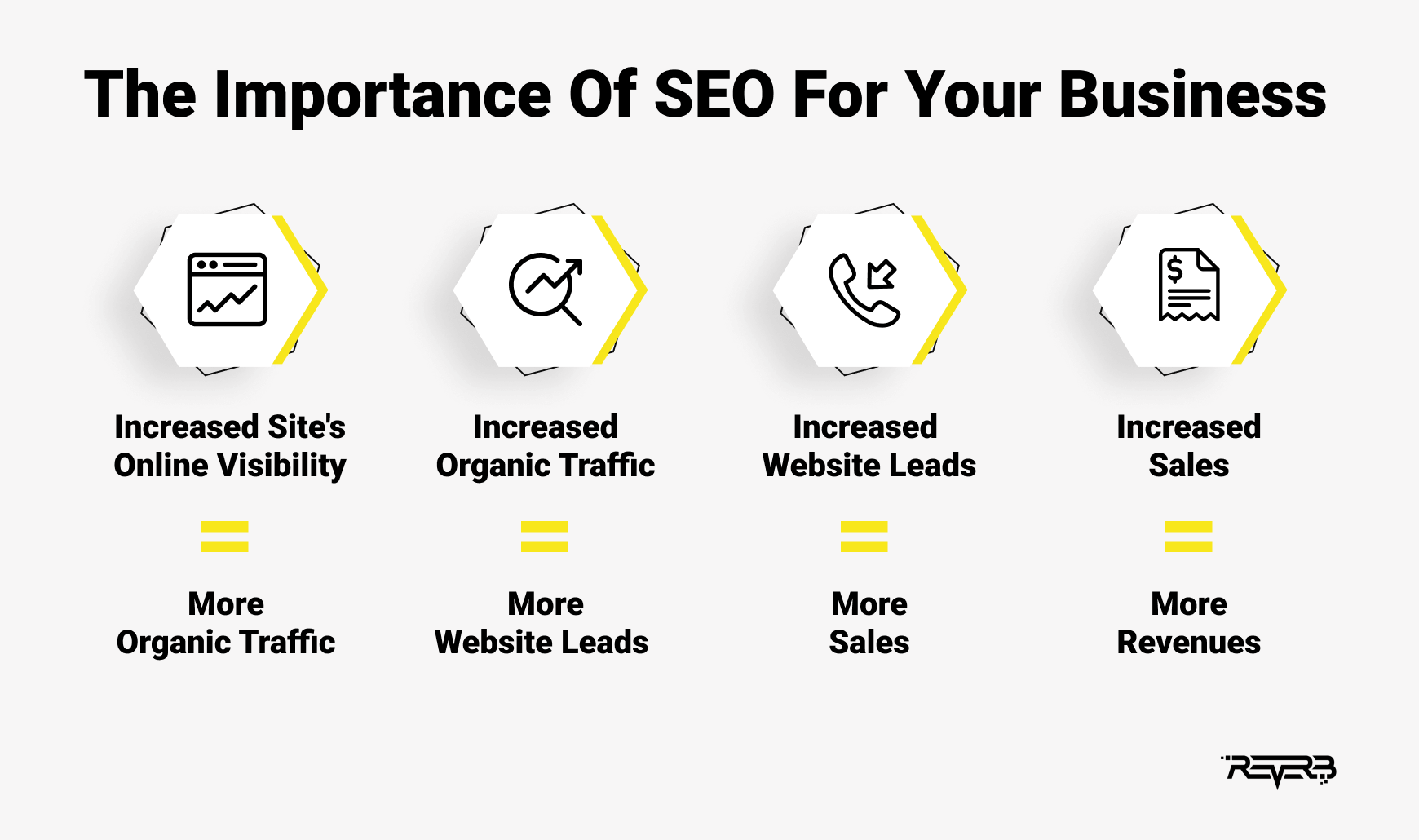
SEO for Beginners: How to Get Started with SEO
So, how can you increase quality traffic to your website through the power of SEO? What can you do to boost the number of visitors, incoming calls, and conversions?
This search engine optimization guide will walk you through every step of the way. Let’s get to it!
1. Identify your target audience
First things first, know and understand who your target audience is.
These are the people you want to attract to your website, particularly those searching online to look for a brand like yours. These are the exact people who have specific problems that your product or service can solve.
Once you have a good grasp of your target audience, you’ll be able to:
- Determine what they’re searching for
- Learn how they speak
- Know their common pain points
- Figure out where they usually spend time online
Equipping yourself with these essential bits of info allows you to transform everything within your SEO plan – whether your landing pages, the type of content you create, or the platforms to promote your website.
To define your target audience, our SEO guide shares three simple steps:
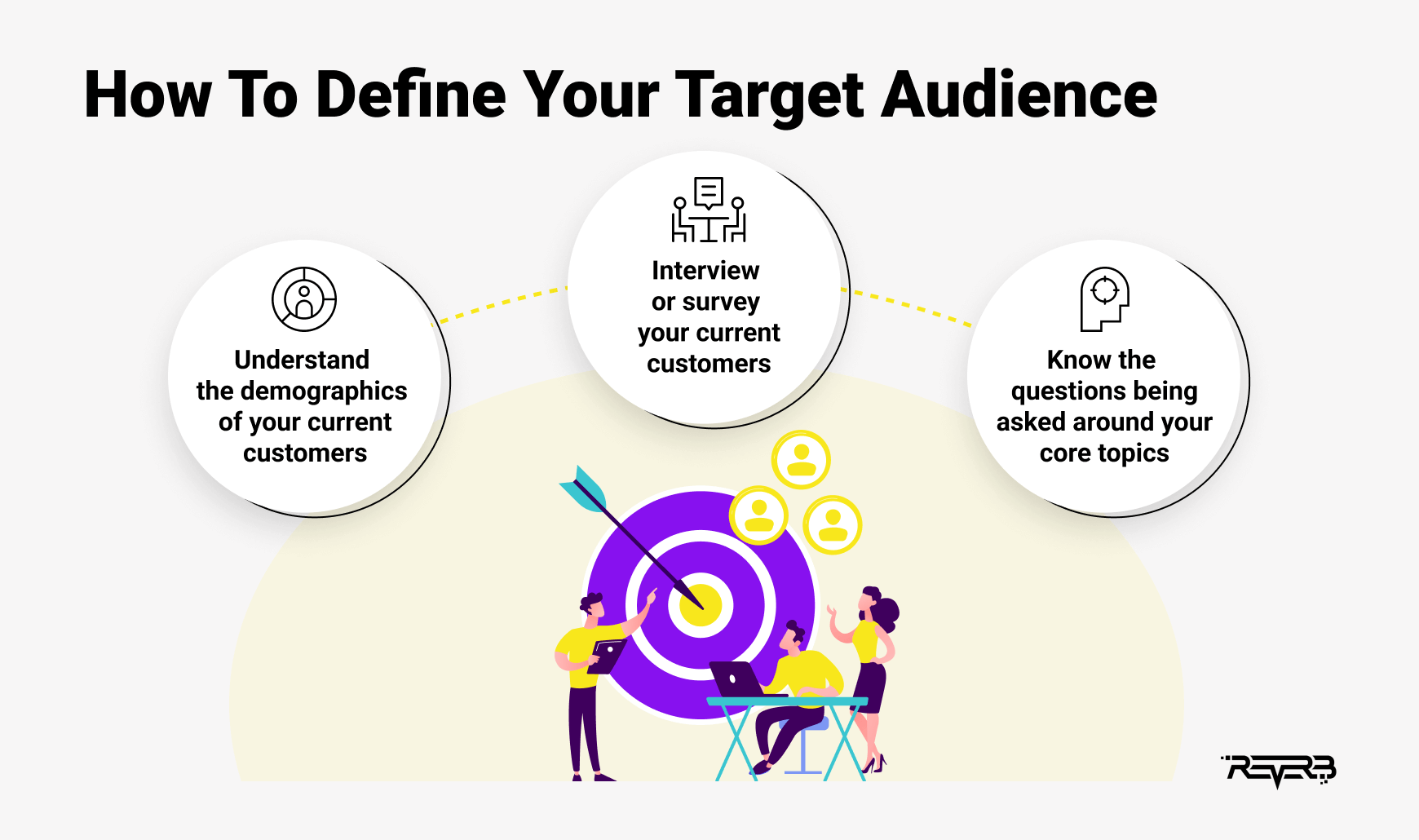
- Understand the demographics of your current customers. Your existing customers should serve as a basis for identifying who your SEO strategy should be targeting. Have a seat with your sales team and get valuable insights about your customers.
- Interview or survey your current customers. While asking your sales team about your customers works well, you can also consider interacting with them yourself. There’s no better way to identify your target audience, the content that engages them, and how they prefer to be targeted online than by reaching out to those who have already bought from you.
- Know the questions being asked around your core topics. Questions play a vital role in providing you information about your target audience and the topics they care about relating to your business. That’s why you should take time to analyze what your ideal audience is exactly searching for. The Keyword Magic Tool by Semrush can get the job done for you.
2. Determine which keywords to target
All SEO for beginners guide will tell you that keywords are the foundation of search engine optimization – and we are no exception.
Using keywords relevant to your business and niche will get your website to rank high in search engines. These keywords should be popular with your target audience, though they shouldn’t be heavily used by your competitors.
A great place to start is using an online keyword research tool, such as Ahrefs, Semrush, Google Keyword Planner, or KWFinder. They’ll provide you with data about keywords related to your brand. These are the same keywords you’ll employ in your on-page SEO strategy, which we’ll be discussing later on.
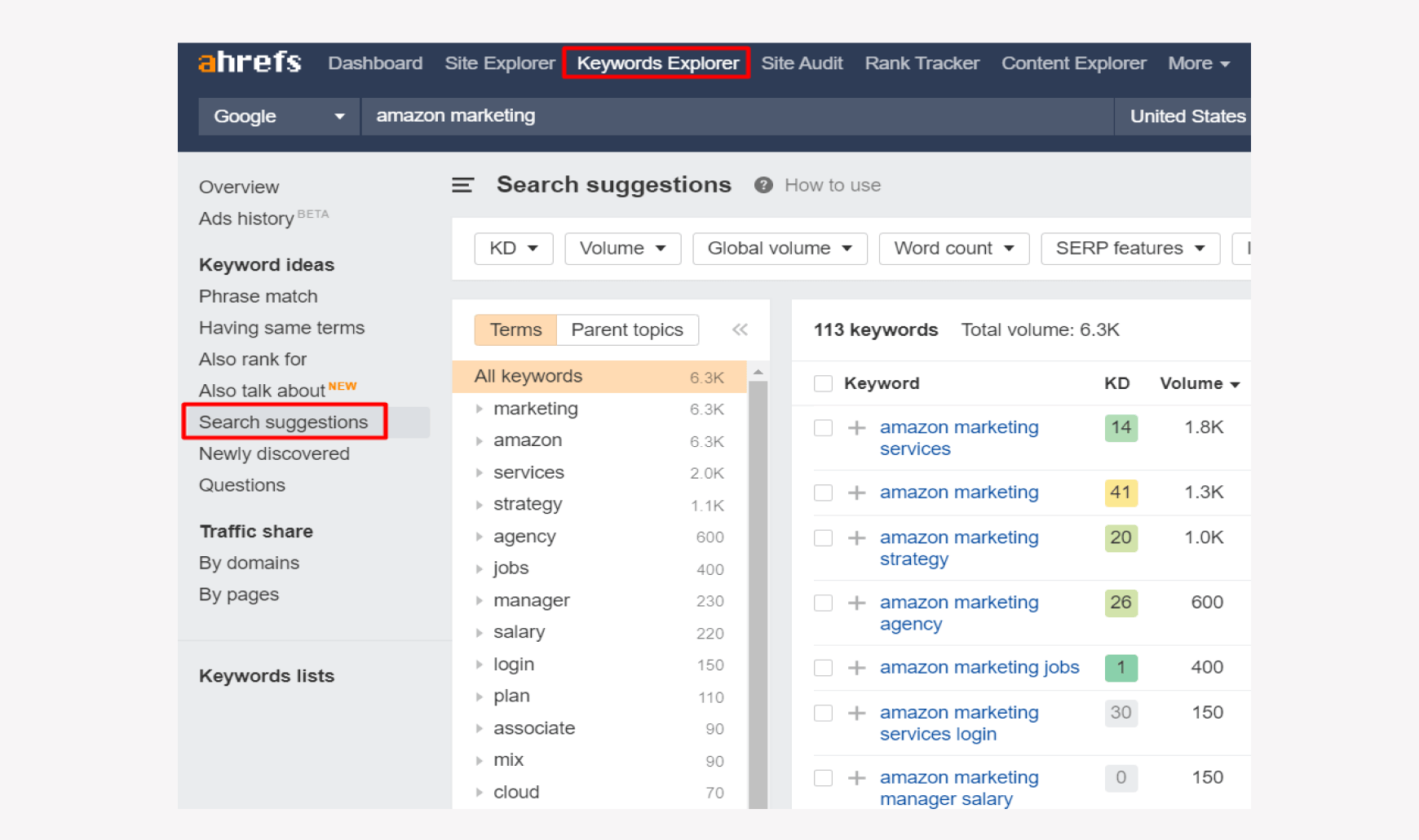
From your blog posts and landing pages to your title tags, meta tags, and meta descriptions, make sure to incorporate these keywords whenever possible. Just don’t overuse them, as Google penalizes websites that practice keyword stuffing.
3. Develop topic clusters
Topic clusters, when done right, can help you rank high, drive more traffic, and boost your conversion.
If you’re not familiar, topic clusters are groups of related content that collectively cover a broad subject area. They use hyperlinks to put these pieces together, making it easier for your target audience to discover your posts.
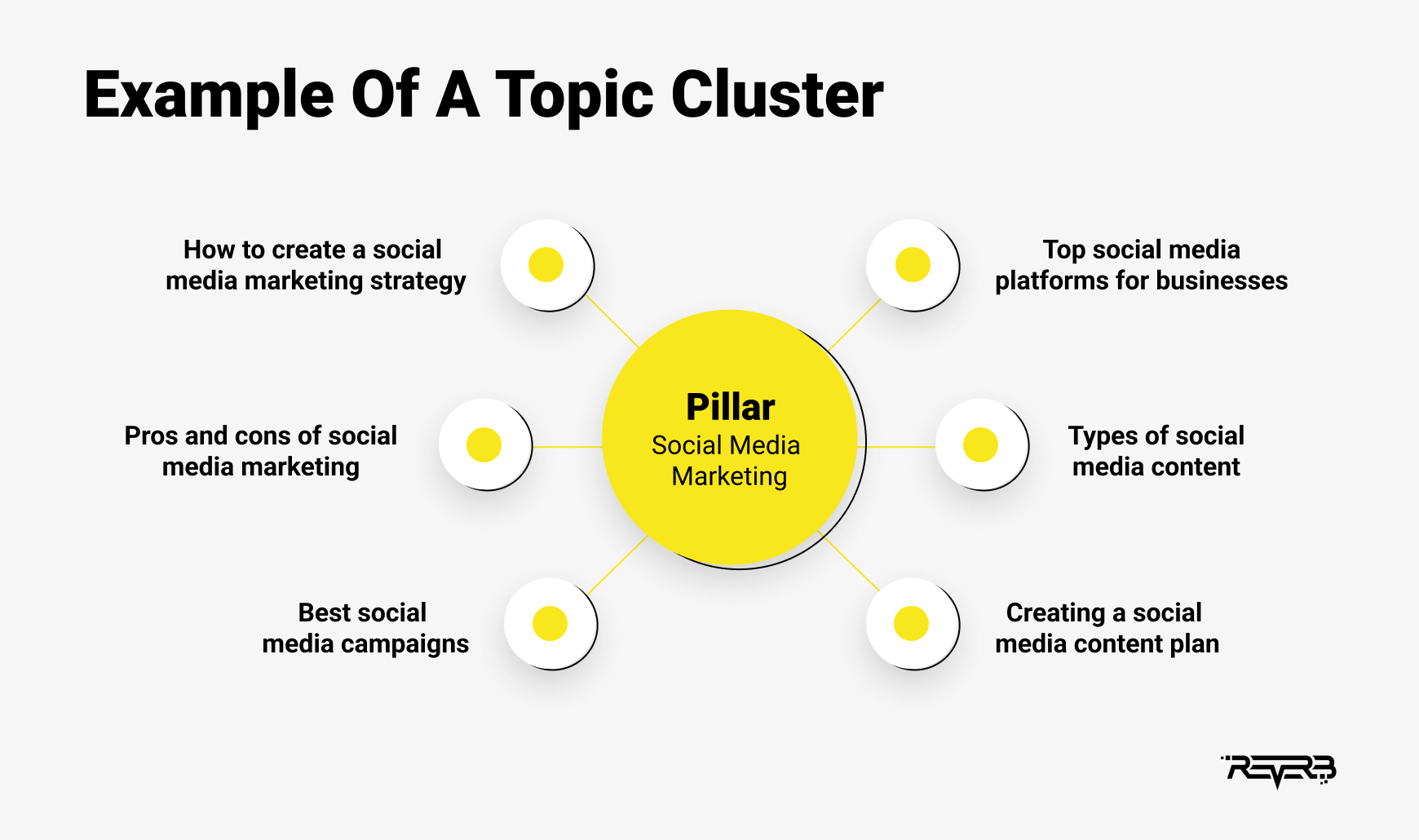
Here’s how you can create a topic cluster:
The best way to see progress in your organic rankings through topic clusters is by starting with what you already have.
If your website has existing content, conduct a content audit to get a detailed list of all the content you’ve already published. Group content pieces that cover a specific topic and link them together to form a topic cluster.
Your main topic should be broad enough so you’ll be able to come up with several subtopics to discuss. At the same time, it should be narrow enough to allow you to highlight all the critical points on your pillar page, which is the basis on which a topic cluster is built.
- Brainstorm your subtopics
Think about all the questions your target audience will have regarding your topic, as well as their pain points.
Put yourself in your audience’s shoes. Come up with questions they have in mind, then create content to answer these questions.
Read your customer reviews and testimonials. Post questions on your social media pages for feedback. And have your support team list down the questions your prospects and customers typically ask.
- Interlink your content cluster
With your pillar page and subtopics in place, it’s time to link them with each other. This means linking between subtopics and subtopics back to your pillar page. Be sure that your anchor texts are relevant to the content you’re linking to.
It’s important to remember that it may take some time before you can see the results you’re expecting, so don’t get discouraged if there’s no positive outcome just yet. Consider writing SEO reports to track the effectiveness of your SEO efforts.
Once you notice things are going up, track these changes, measure their success, and apply necessary adjustments. You can use several analytics tools to track your progress, like Google Analytics, Buffer, and Databox.
4. Create compelling content
Here’s the deal: People love engaging content. It’s one of the reasons why they keep coming back to a website.
In fact, 82% of consumers say they’re more likely to buy from a company that delivers custom content.
But, what does this have to do with SEO, you ask? Everything!
Through content marketing, you can publish blogs that contain the keywords you want to rank for. Use the right words to support your keyword strategy so that search engines will see that your content is highly relevant to searchers, leading them to improve your rankings.
Also, providing unique, valuable content to your target audience helps your blog page build a reputation as a hub for credible information. When they like what you’re writing, your readers will likely share your content pieces on social media or by word of mouth, therefore driving new visitors to your site.
Here are some of the best practices for writing high-quality articles:
- Solve your audience’s problem
- Create a hook that grabs your audience’s attention in three seconds
- Keep your tone conversational
- Incorporate short and long-tail keywords naturally
- Add relevant and engaging visuals
- Focus on a single purpose
- Proofread, proofread, proofread
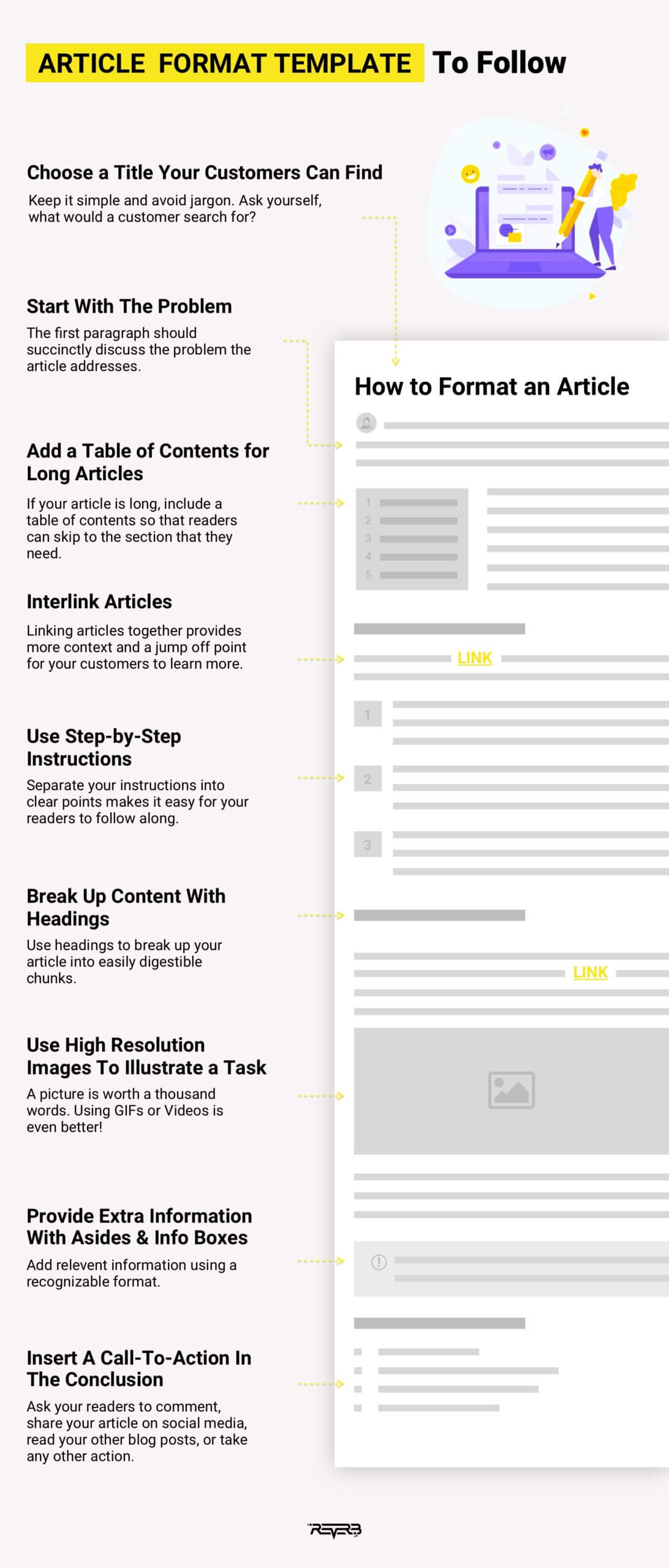
5. Work on on-page SEO
On-page SEO is the practice of optimizing web pages for search engines and humans. It’s where factors such as content quality, headlines, meta tags, URL slugs, and other tags fall under.
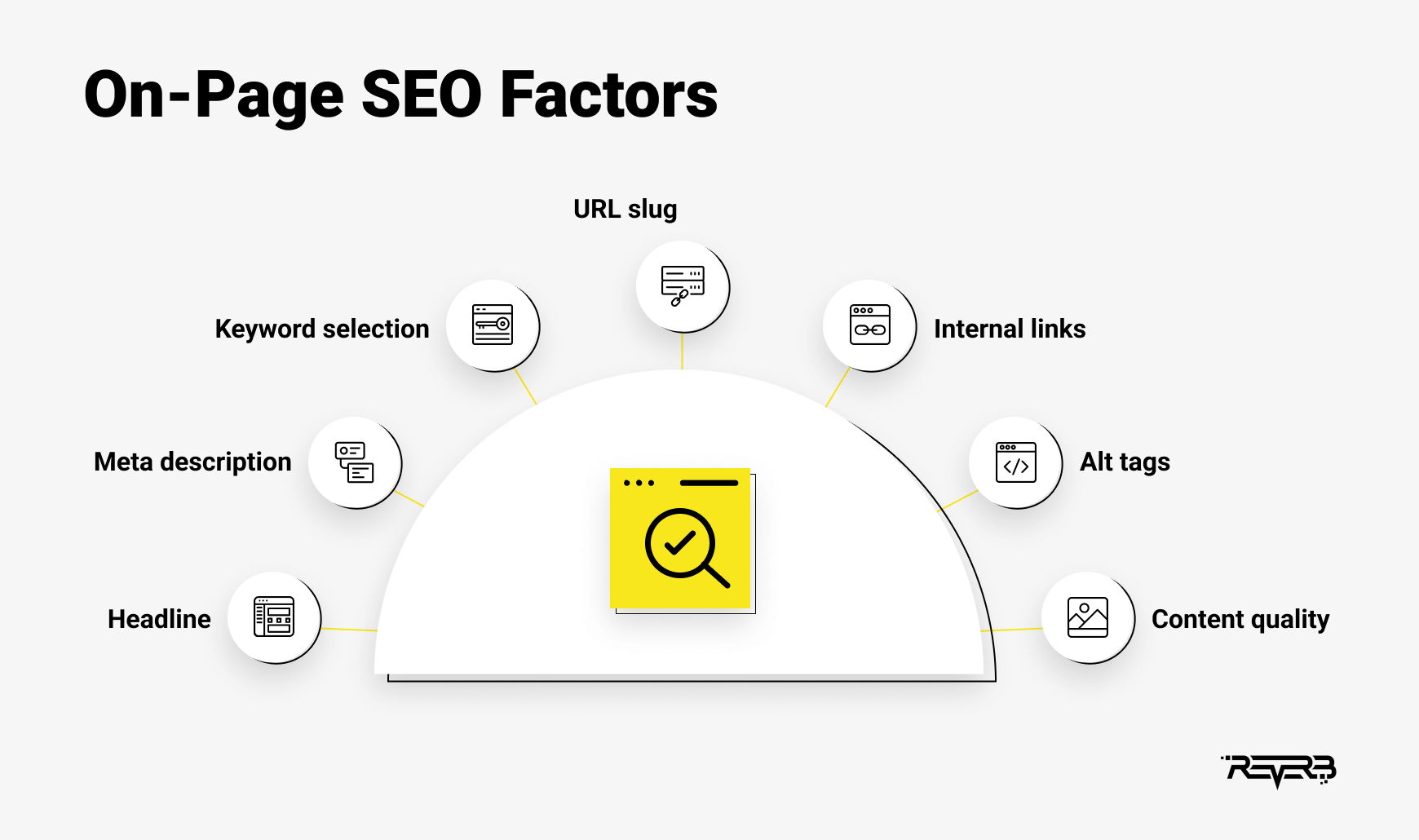
A good rule of thumb is to use the primary keyword in three areas: Your headline (preferably at the beginning), slug, and at least one subheadline.
Throughout the entire body, aim to include 0.5%-2.5% of your keywords. While it may sound tempting to sprinkle them all over, you should avoid it, or Google will penalize you.
Other than that, here’s a couple of on-page SEO basics to keep in mind:
- Keep your page title under 70 characters. Otherwise, your title will be cut off in search results. Don’t stuff it with keywords, either.
- Optimize your meta description. Ideally, it should contain less than 160 characters (including your keyword), although Google has been known to allow longer meta descriptions (220 characters max). Make it compelling enough that searchers will gladly click on the link.
- Add image alt text. Alt text tells search engines what your images are about, which means users may easily discover your website through your visual content. For your alt text to be effective, it should be descriptive, specific, and contextually relevant to the broader page content.
- Write SEO-friendly URLs. Use “HTTPS” instead of “HTTP,” as Google and readers regard it as a positive factor. Eliminate unnecessary words, and don’t forget to use the primary keyword.
Consider using an SEO checker to ensure all your web pages are perfectly optimized.
6. Work on off-page SEO
Just because it’s called off-page SEO doesn’t mean that it has nothing to do with SEO. It’s actually all about SEO.
Off-page SEO refers to how you optimize your website using external means. Like on-page SEO, it helps drive organic traffic and increase online visibility, among many other things. In this stage, you need to implement a toxic link checker, which can help to identify and disavow harmful links that may negatively impact your site’s search engine rankings.
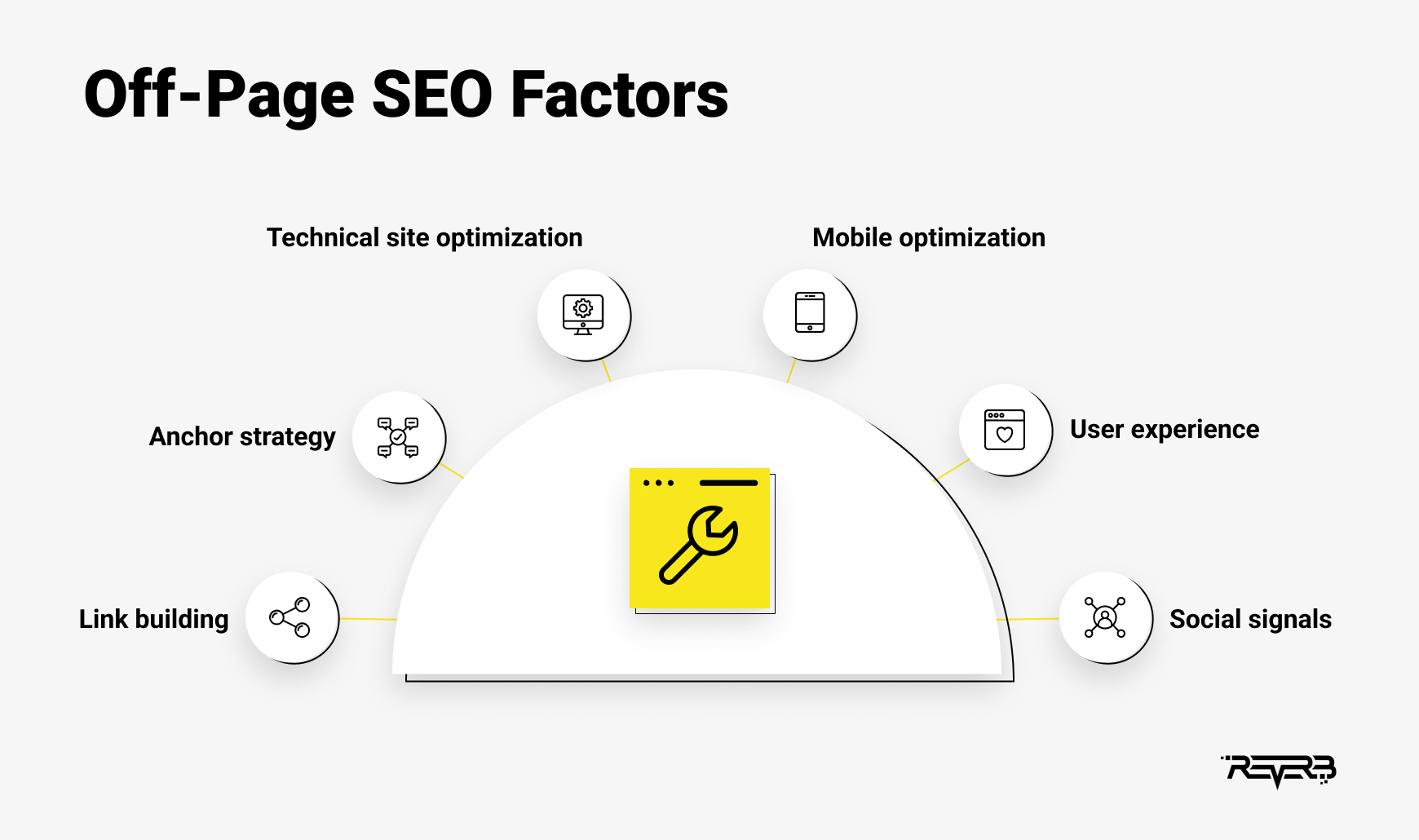
Follow these tactics, and you’ll be on the right track:
- Build and gain quality backlinks. Backlinks are the heart of off-page SEO as they directly affect your site’s Domain Authority which is Google’s number one ranking factor. Thus, you should definitely prioritize link building. You have tons of options to choose from: local citations, guest blogging, outreach marketing strategies, paid ads, and social sharing.
- Submit your business website to local listings to increase your exposure, traffic, and revenue. Plus, being listed in local directories – such as Google My Business, Yelp, and Foursquare – gives you a chance to build a valuable backlink from a top authority website.
- Fix your 404 errors. Having a broken link will lead your visitors nowhere but a 404 page. Such pages offer little value to users, and web crawlers see them as a major red flag. Using a broken link checker tool should be your best bet. Sitechecker, Ahrefs Broken Link Checker, W3C Link Checker, and Google Webmaster Console are among the top backlink checkers.
Conclusion
We can’t deny that SEO can get really complex, but understanding and applying these SEO basics will no doubt give you a good headstart. We sure hope our SEO for beginners guide will bring you success in the near future.
Still don’t know where to get started with search engine optimization? Drop us a line, and ReVerb’s first-class SEO experts will help you skyrocket your site’s rankings!
Author Bio

Rumzz Bajwa is a digital strategist and content marketer at Digital Resource. She enjoys spending time with her family. She loves to go out and experience new moments whenever they came to light. Rumzz discovers satisfaction in investigating new subjects that help to extend her points of view. You can frequently locate her immersed in a good book or out searching for a new experience.












